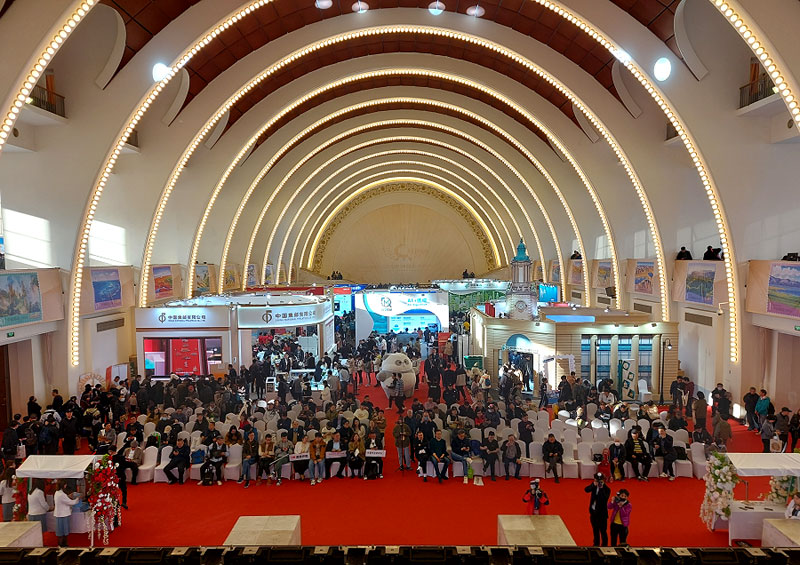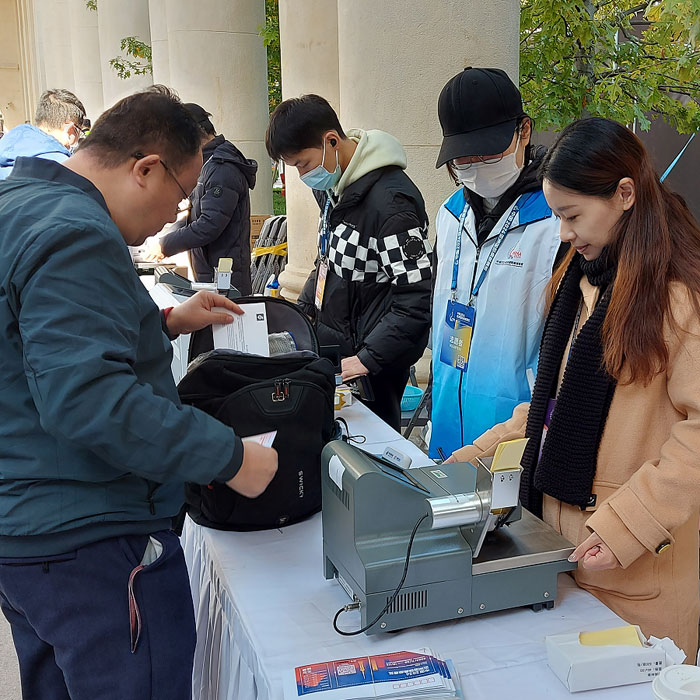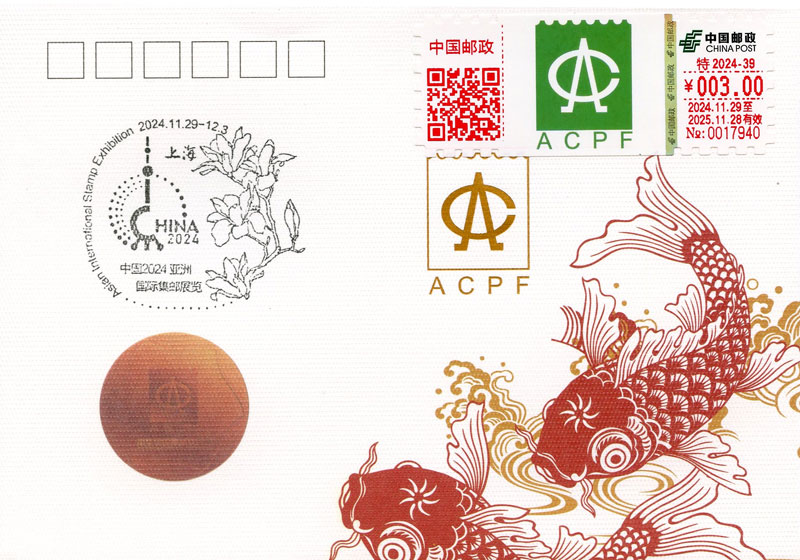In recent months I had the opportunity to visit several major philatelic events in Europe and Asia, yet nothing can compare to CHINA 2024 in Shanghai.
CHINA 2024 Asian International Stamp Exhibition was held from November 29th to December 3rd at the Shanghai Exhibition Centre’. It was organised by the State Post Bureau, the government agency that regulates China Post, in collaboration with local bodies and the All-China Philatelic Federation.


Just a few notes. With the slogan ‘Stamps Present Asian Culture’, the exhibition brought together more than 1600 frames, as well as collections from the Postal Museum, commemoratives celebrating the 75th anniversary of the founding of China, and collections specializing in crypto stamps and NFTs, UPU issues, etc.

The CHINA 2024 logo features the outline of the Oriental Pearl Tower, with a capital letter C (the first letter of China), together resembling the magnifying glass used in philately.
The exhibition mascot, designed from the image of
‘邮筒弟’ Youtongdi (Brother Mailbox), a product developed by Shanghai Post.

Over the five days, the event attracted tens, hundreds of thousands of avid visitors of all ages, who literally snapped up everything on sale from over a 100 booths. China Post issued a set of four commemorative stamps and a sheet, which sold out quickly. All China Post provincial sections or branches were represented with a stand, as were some of the new ‘themed post offices’, all with their own postal and philatelic products and issues.




The international stamp fair consisted of some 40 philatelic dealer stands, a dozen postal administrations from Europe and Asia, and two security printers; Cartor Security Printing and Royal Joh. Enschedé (images below). The latter issued a series of six sample crypto-sheets simulating crypto-stamps which they distributed free of charge and which aroused enormous interest among the visitors. The designs depict real and mythical Chinese animals in Dutch landscape backgrounds, symbolising the unique relationship between China and The Netherlands.


For the few Western visitors, a visit to this great philatelic event could be a bit disconcerting, even intimidating at times. From the entrance queues of hundreds or thousands of people in the early hours of the day to having to have a prior booking through a Chinese language booking page (…) where a local telephone number was required …

The language barrier did not help, the information panels and the exhibition guide were in Chinese, and it was difficult to find anyone who spoke English, apart from a few young volunteers who knew nothing about philately. Difficult, therefore, to understand much of what went on there over the five days, even more what was available, and where!




Our field of study is variable value stamps and related issues, and this brief explanation serves as an introduction to two topics or issues of CHINA 2024 which we will discuss in a little more detail; CHINA 2024 – Variable Value Stamps and the Cartor sample issues.
Variable value stamps in CHINA 2024. Franking machines
China Post set up a temporary post office with six franking machines of two different models at the exhibition grounds. These machines were operated by China Post staff and had been programmed to issue variable value / meter stamps with designs commemorating the exhibition.
Once the face value had been chosen, the stamps could be directly printed on the postal items or on blank self-adhesive labels, size 150 x 40 mm, all at the customer’s request.

The first model is possibly the most curious and unknown to western collectors. The meter stamp is printed with a franking machine equipped with three ink cartridges, enabling coloured imprints.


The stamp includes a block on the left in red with the location of the machine and a Datamatrix code, in the centre there’s the exhibition logo and mascot printed in colour, and on the right a block again in red with the face value (¥000.80, the local postage rate in the image), the date of issue and a unique control number for each stamp.


The second model is more common and well-known, a franking machine printing in red with the exhibition logo on the left. As in the previous case, the printing includes information on the temporary post office, the date of issue, a unique alphanumeric code, the face value and the machine code (JA19 in the image).




Of greater curiosity and interest was, China Post’s installation of a franking machine at the exhibition on November 30th, with a special imprint promoting the launch of the ‘CHINA Red Revenue Surcharges’ book.

However, this is only the tip of the iceberg.
For several years now, franking machines of both types have been used to issue commemorative franking stamps for certain events or commemorations.
However, China Post’s provincial sections or branches now issue a new format of self-adhesive pictorial variable value stamps, with simulated square perforations, which are commonly used for the franking of commemorative covers and postcards and not normally available as mint stamps. Below the face value, these stamps are printed with the period of postal validity, which can be from several months to a year after issue.
Some museums, cultural institutions and non-profit associations can also request personalized designs of these stamps. This is the case with the stamp used on the cover produced by the All-China Philatelic Federation for CHINA 2024 and illustrated with its logo. As can be seen in the picture, the period of validity runs from November 29th 2024, the exhibition opening, to November 28th 2025.

Undoubtedly, a whole new world yet to be discovered, and in which we invite you to participate.
(To be continued …)
(English edition rewritten by J. Gareze – December 2024)
Access to this site, and to the website in general, is monitored and its contents are protected by copyright.
The unauthorized copy of the text and / or images is prohibited


